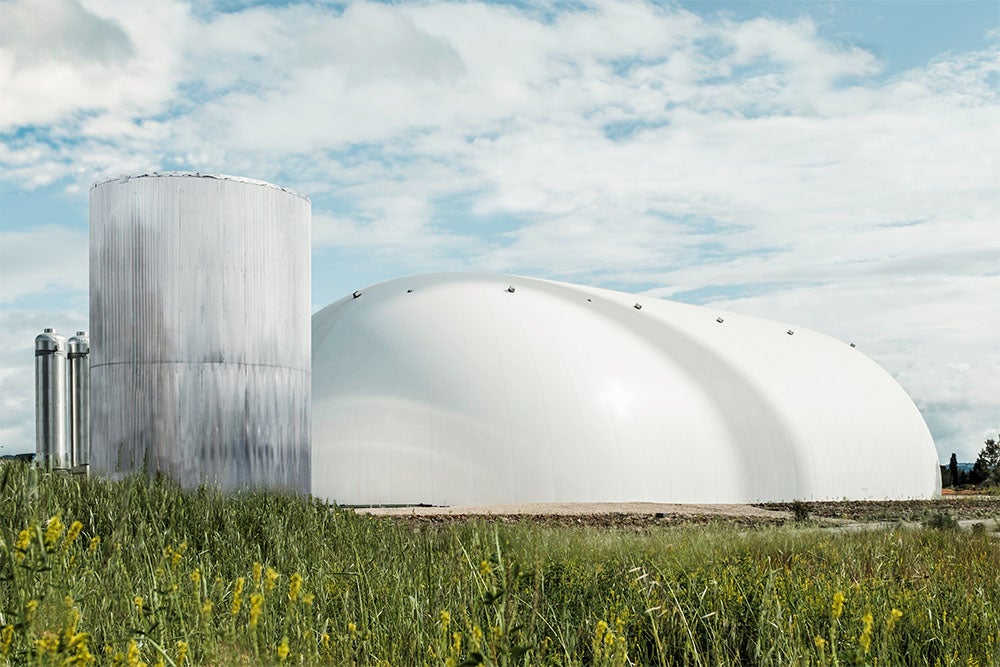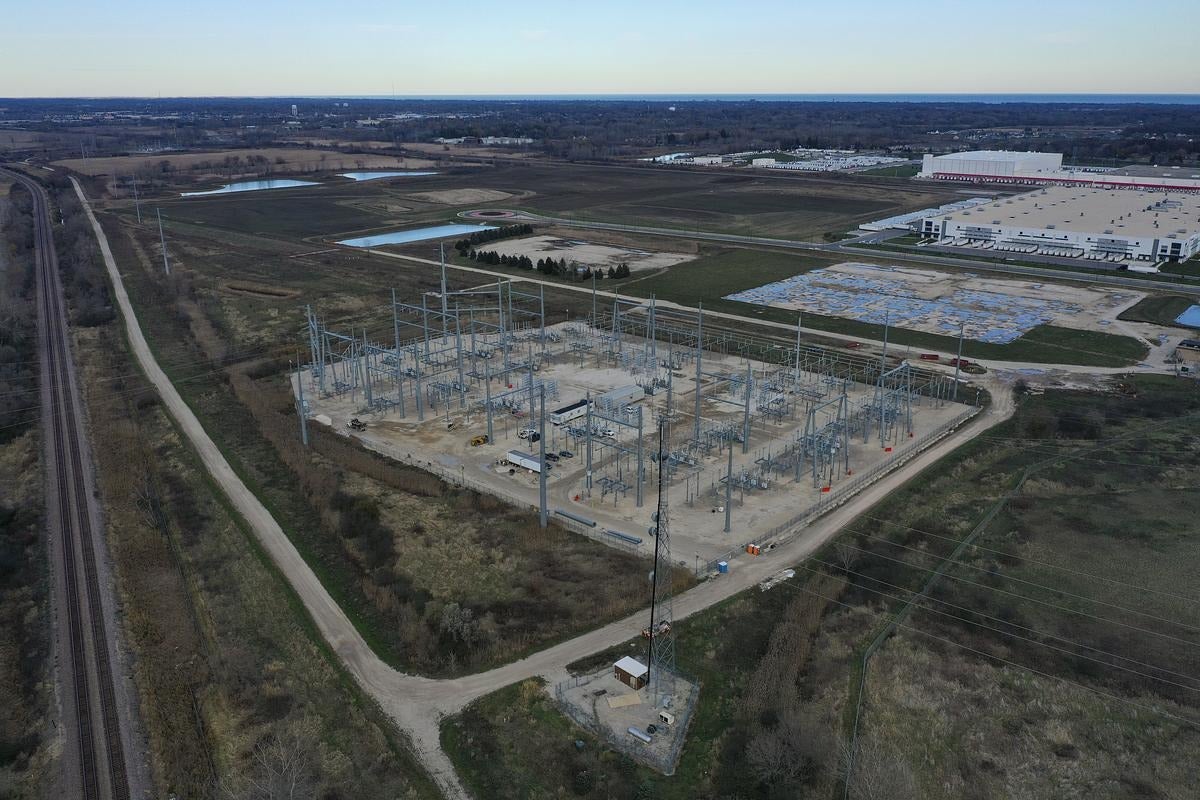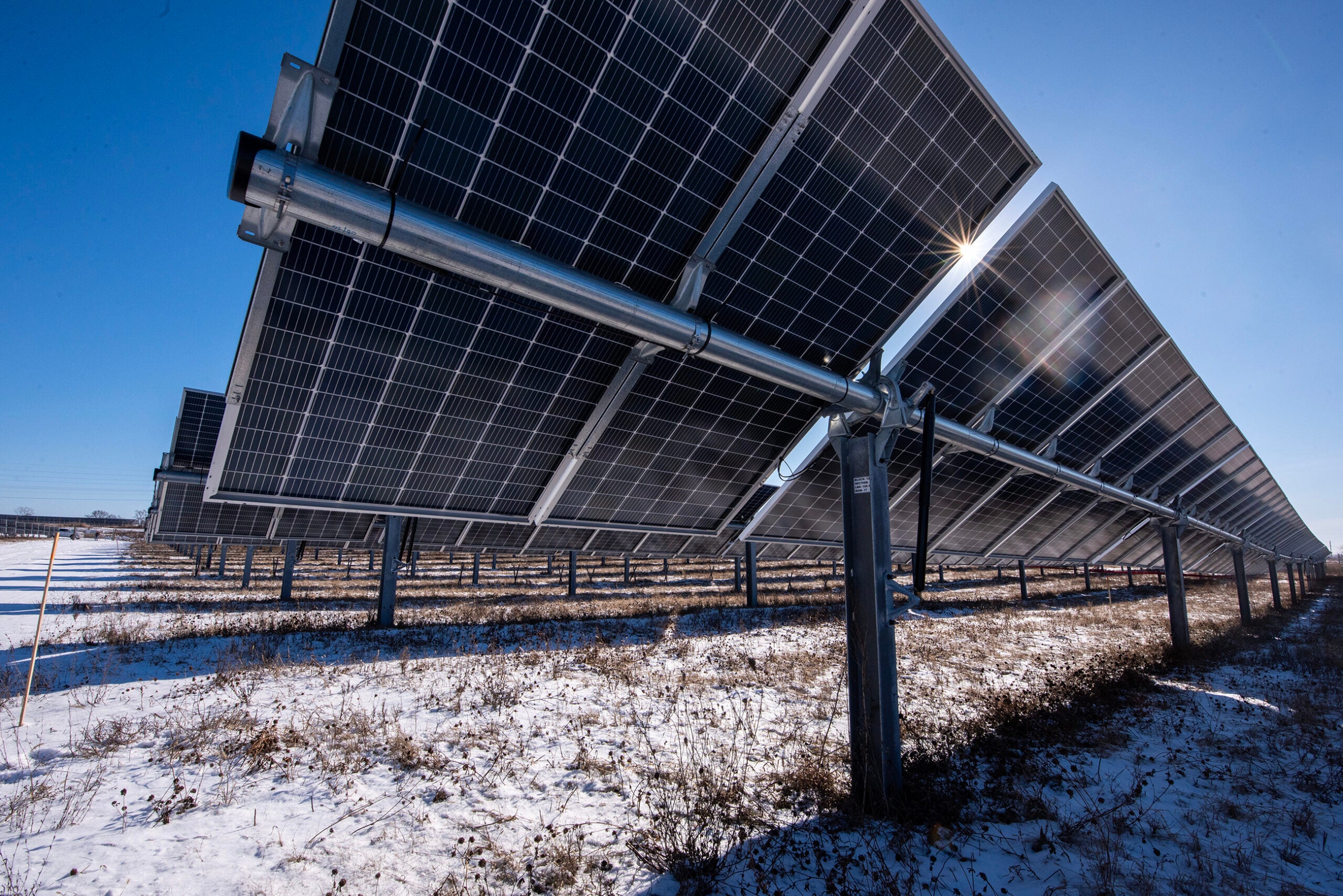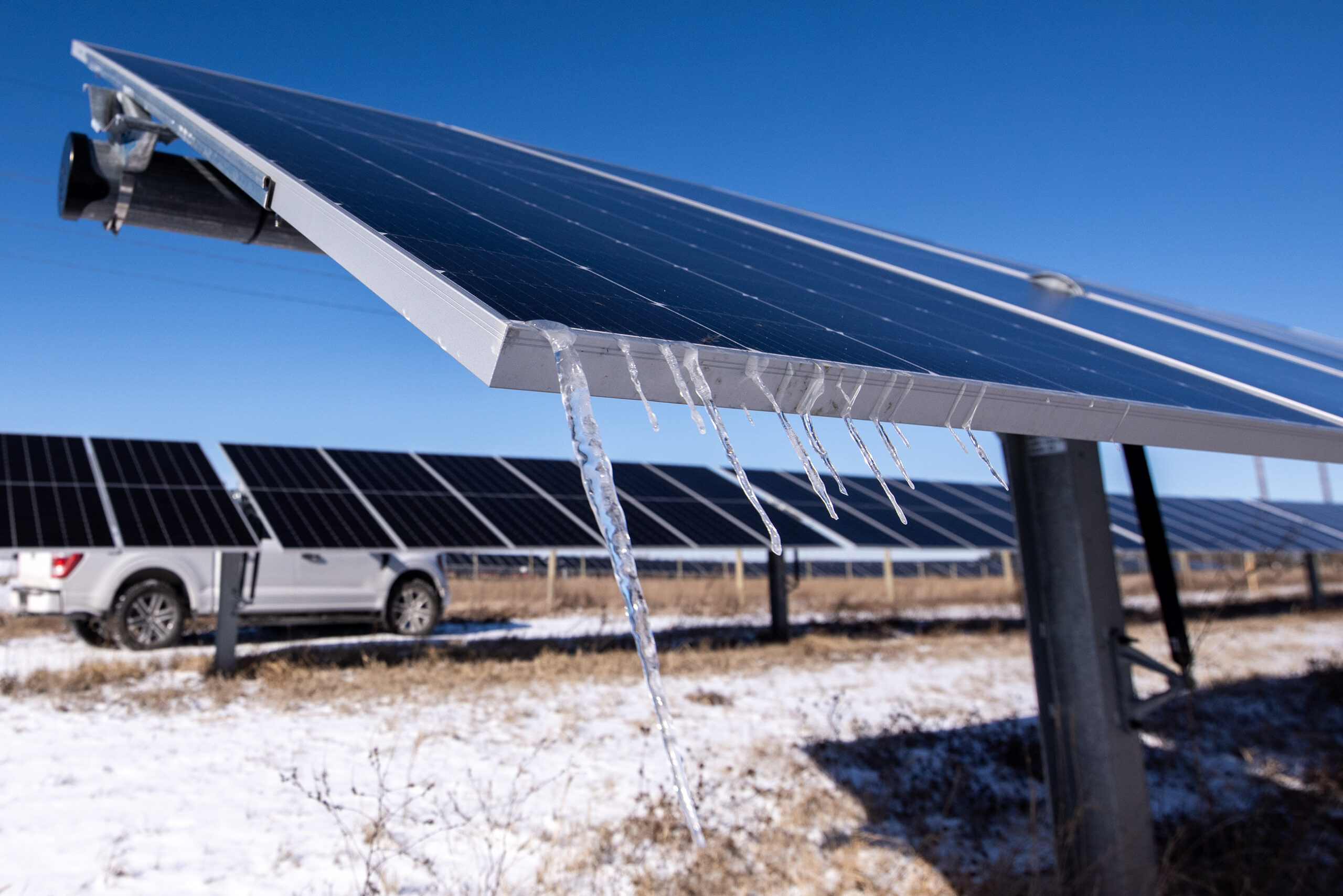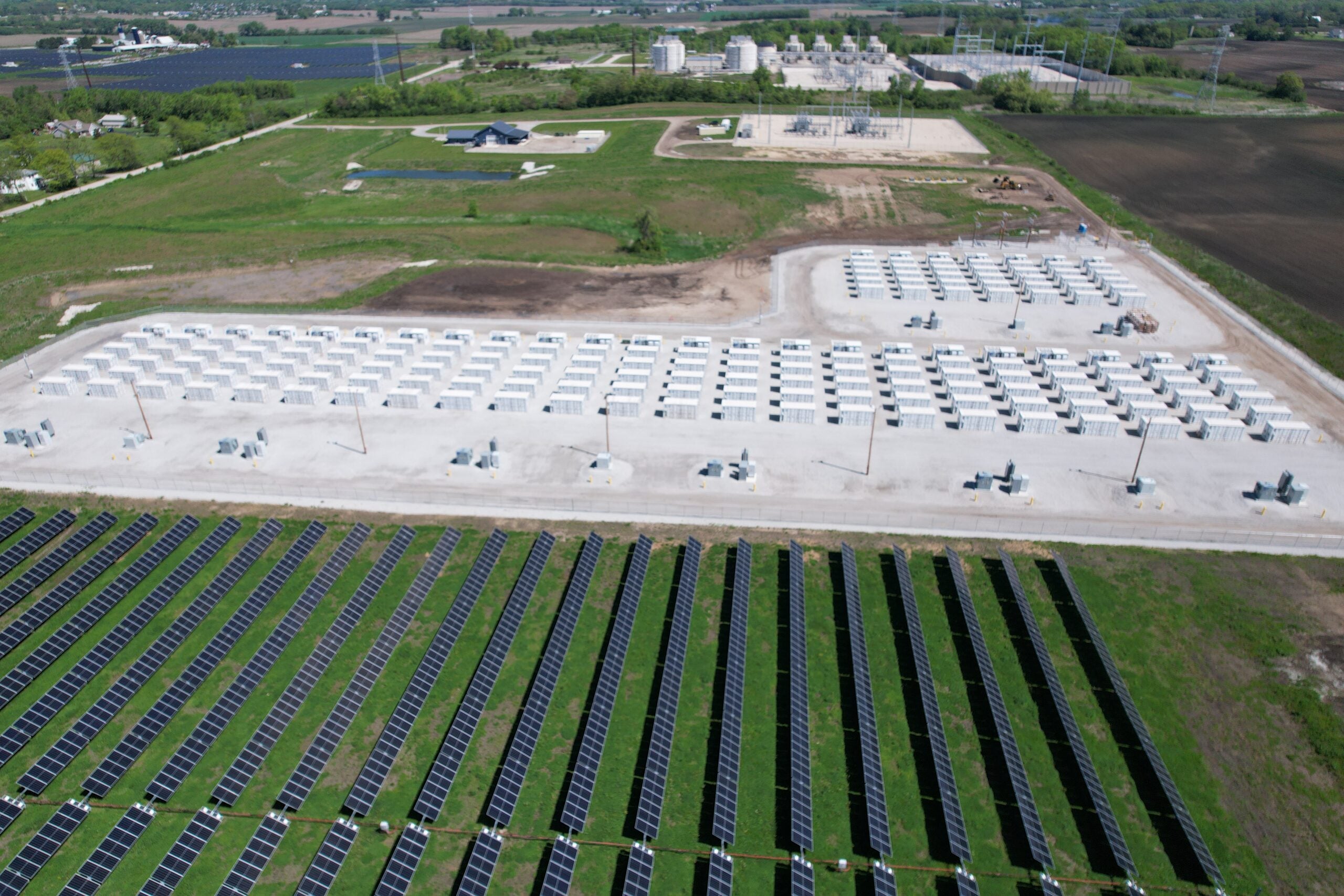A first of its kind energy storage system will be coming to Wisconsin in the next few years, and could serve as a blueprint for wide-scale deployment across the country.
Alliant Energy on Friday announced it received a $30 million federal grant for a 200-megawatt-hour storage system in Columbia County.
According to the U.S. Department of Energy, the project would be the first to demonstrate the carbon dioxide-based energy storage system at a commercial scale.
News with a little more humanity
WPR’s “Wisconsin Today” newsletter keeps you connected to the state you love without feeling overwhelmed. No paywall. No agenda. No corporate filter.
The Columbia Energy Storage Project will offer 10 hours of energy storage capacity by compressing carbon dioxide, or CO2, gas into a liquid, Alliant said. When energy is needed, the system converts the liquid into gas to power a turbine that generates electricity. The gas will be stored in what utility officials call an “energy dome.”
The facility is designed by an Italian company named Energy Dome, which has already worked on this technology in a smaller-scale demonstration site in Sardinia, Italy. Alliant describes the Wisconsin project as a “highly efficient, zero-emission” battery system that can power roughly 20,000 homes, and would be the first of its kind in the United States.
Mark Anderson, director of the Thermal-Hydraulics Laboratory at the University of Wisconsin-Madison, said energy storage systems will continue to be needed as clean energy sources become more widely used. That’s because renewable energy technologies — like wind and solar — primarily generate electricity when the sun is shining and the wind is blowing, he said.
“As you add these renewables that are only producing power at certain times, we need to store the energy so that we have a baseline amount of energy,” Anderson said. “The more energy we can store in an environmentally friendly way, the better off we are with respect to cleaning up the environment from the power produced by our actions.”
In a statement, Alliant Energy CEO John Larsen said the added storage capacity from the system in Columbia County will help strengthen the company’s generation portfolio and improve grid reliability.
“The Columbia Energy Storage Project is just one way we are investing in the communities we serve while building a stronger, smarter and more sustainable energy future,” Larsen said.
The facility will be built near the current Columbia Energy Center, a coal-fired power plant that’s co-owned by Alliant, WEC Energy Group and Madison Gas and Electric. The three utilities are also partnering on the storage project.
The coal-fired power station is scheduled for retirement in 2026, the same year Alliant hopes to have the storage facility up and running. The utility plans to seek approval from the Public Service Commission in the first half of 2024, and begin construction in 2025.
Mike Bremel, director of engineering and customer solutions for Alliant, said the retirement of the coal facility is one of the reasons the utility chose Columbia County to host the storage facility.
“The amount of land that we have in that area provides an ample opportunity not only for placement of the energy dome, but then we also have the interconnect that’s already there to the transmission grid,” he said. “(We are) optimizing the use of that location as well as the access to the transmission grid for storage of the renewable energy, so it’s consistent with our transition from coal to renewable energy.”
In addition to partnering with other utilities on the project, Alliant is also working with Shell Global Solutions U.S., Electric Power Research Institute, UW-Madison and Madison College.
Bremel said Alliant plans to source the majority of the materials for the storage facility from Wisconsin manufacturers, and ideally would source all materials from U.S. companies.
“That is dependent on the capabilities of the manufacturers, as well as the requirements of the energy dome,” he said. “But it presents quite an opportunity for first of the kind of investments and opportunity for the local and surrounding communities in southwestern Wisconsin.”
Wisconsin Public Radio, © Copyright 2026, Board of Regents of the University of Wisconsin System and Wisconsin Educational Communications Board.
